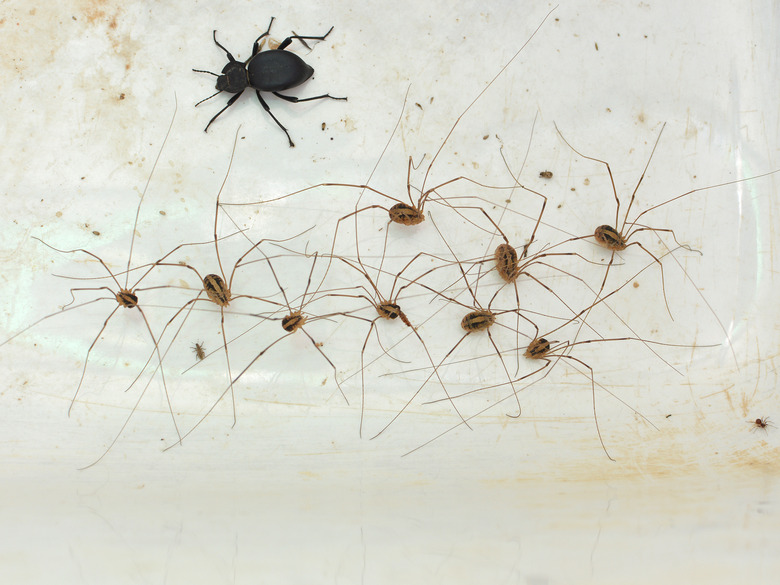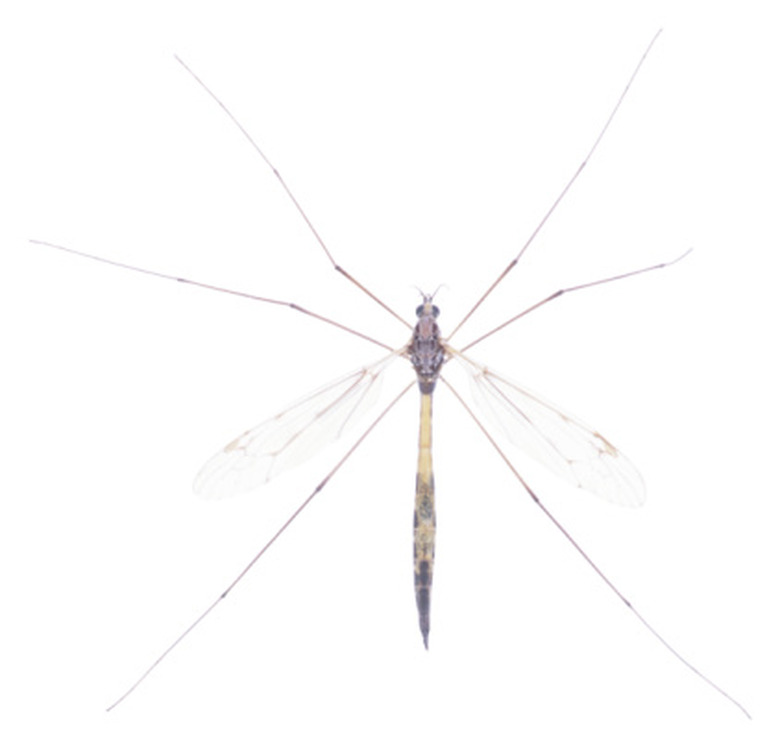What Eats Daddy Longlegs?
The daddy longlegs, otherwise known as a harvestman, might appear creepy with its long, gangly legs, but anyone wanting to rid a home or garden of bugs should consider befriending the creature. Although not without foes, the daddy longlegs more often plays predator than prey.
Pretenders
Pretenders
Someone seeing a long-legged insect with wings might mistakenly call it a daddy longlegs. Despite the resemblance, the bug is actually a crane fly, which belongs to the Tulipidae family and is unrelated to the harvestman. The crane fly's worm-like larvae eat plant matter and mature only briefly to their winged and leggy adult form for the sole purpose of mating. Many digging or flying animals eat these insects. Another source of confusion is the cellar spider, which sometimes is called a daddy longlegs as well. It eats the body fluids of insects caught in its web, and birds and larger spiders have been known to prey on it. Just to further complicate matters, the harvestman has a few accurate nicknames of its own: daddy longlegs (in all of its varied spellings and hyphenations), shepherd spiders, harvest spiders and grandfather graybeards.
Not a Spider
Not a Spider
Although its long legs suggest otherwise, the harvestman is related more closely to mites than to spiders. Like the spider, harvestmen belong to the arachnid class, but they occupy their own order — Opiliones — and their bodies differ from spiders in important ways. Spiders each have eight eyes and two body segments, while the harvestman has only two eyes and a body fused into one oval segment. Spider fangs produce venom, while the fangs of a daddy longlegs do not. Harvestmen also lack the silk glands necessary to spin webs.
As Predator
As Predator
Deceptively delicate-looking with its long, slender legs and tiny body, daddy longlegs is every kind of predator: scavenger, carnivore, herbivore — and even cannibal. It will eat live or dead aphids, flies, mites, small slugs, caterpillars, earthworms, beetles, small spiders, mites, snails and occasionally the harvestman next door. It might eat the ants on a crumb of food, then eat the food itself, be it a piece of bread or butter or fatty meat. It will also eat bird droppings, fungi and decaying plant matter. Still, harvestmen pose no threat to people, animals, crops or buildings.
As Prey
As Prey
Although a cat or dog might eat the occasional daddy longlegs, birds and larger predatory insects and spiders pose a more typical threat to the harvestman. A daddy longlegs on the defensive, however, implements some creative deterrent strategies. The harvestman can sacrifice a trapped leg to a predator to gain escape, much as a lizard will abandon a tail, and regenerate it later. When alarmed, it also has the power of stench at its disposal: Scent glands near its front legs emit an odor suggesting to a predator that the daddy longlegs would taste terrible and should be avoided. Stranger yet, some species baffle predators by playing dead or even gluing debris to their bodies.
References
- University of California, Riverside: Daddy Long Legs Myth; August 2009
- Science Ray: 10 Fascinating Facts of the Grand Daddy Longlegs
- Galveston County Master Gardener Association Inc.: Harvestmen/Daddylonglegs; Candice Hawkinson
- University of Kentucky Entomology: Kentucky Harvestmen; Blake Newton; October 2006
- University of Kentucky Entomology: Crane Flies; Blake Newton; October 2008
Cite This Article
MLA
Bishopp, Kristie. "What Eats Daddy Longlegs?" sciencing.com, https://www.sciencing.com/eats-daddy-longlegs-8085136/. 22 November 2019.
APA
Bishopp, Kristie. (2019, November 22). What Eats Daddy Longlegs?. sciencing.com. Retrieved from https://www.sciencing.com/eats-daddy-longlegs-8085136/
Chicago
Bishopp, Kristie. What Eats Daddy Longlegs? last modified March 24, 2022. https://www.sciencing.com/eats-daddy-longlegs-8085136/

